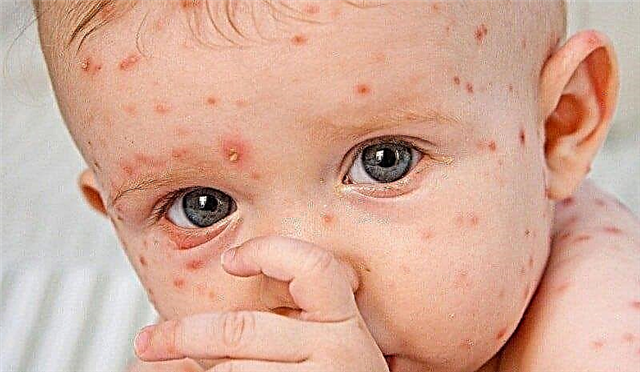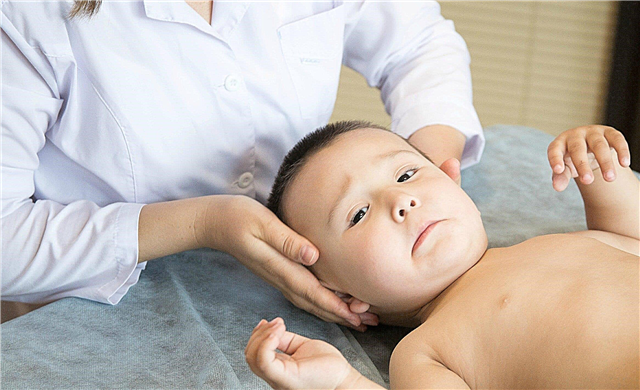Mom looked at her daughter with concern. On the face of Katyusha, cheerful and happy after the children's party, a pink rash clearly stood out, although in the morning everything was wonderful. Maybe you ate sweets? But when she came home, the mother saw a rash all over the child's body and remembered that a couple of weeks ago, a friend's son fell ill with rubella, and they often spend time with the children.
“Well, it’s not scary, but it won’t get sick when it grows up, because measles rubella in children is not dangerous at all,” thought Katya’s mother. Is this really so? And why, then, is rubella prevention carried out in children, since the infectious process does not pose a threat?
What is rubella?
Rubella is an acute viral infectious disease with airborne transmission. The scientific name of the disease comes from the Latin word "rubeolla" - "slightly red".
This is a disease that can only affect humans. Rubella can be congenital and acquired. Rubella was once a very common infection. It is much less common these days.
The rubella virus is widespread throughout the world, but since 1969, when vaccination against the disease began, it is a rarity in civilized countries. Both boys and girls get sick equally often.
How is the infection spread?
You can get infected from a sick person. At the same time, external manifestations in the form of a rash can not be seen in him. Often - in 66% of people - the disease goes without a rash. People with asymptomatic rubella are equally contagious.

In addition, the virus is secreted in a sick person a week before any manifestations of the disease and a week or two after.
The rubella virus is not at all stable in the external environment. Outside the body, he quickly dies, does not like ultraviolet rays and high temperatures, therefore, in the sunny season, children almost do not get sick. It is impossible to transmit the infection through people who are caring for a rubella patient, but they themselves are healthy.
At what age can you get rubella?
Children of preschool and early school age are a risk group with a high incidence.
But childhood infections can occur at any age. Many cases arise among young people. Acquired rubella in children under one year old is a rare phenomenon, and up to 6 months children do not get sick if the mother has already had it before pregnancy. A person who has suffered from rubella develops immunity for many years.
What are the signs of acquired rubella in children?
After contact with the virus, the first signs of the disease can be noticed after 11 - 21 days, more often - 14 - 21 days (incubation period). In most children, rubella occurs in such a way that parents may not even notice the manifestations of the disease, it looks like a slight malaise.
 Other children develop mild symptoms of inflammation - cough, runny nose, conjunctivitis - they are insignificant and quickly disappear. The most characteristic symptom for rubella is an increase and soreness of the behind the ear, occipital and posterior cervical lymph nodes, which makes it possible to distinguish rubella from diseases with a similar rash.
Other children develop mild symptoms of inflammation - cough, runny nose, conjunctivitis - they are insignificant and quickly disappear. The most characteristic symptom for rubella is an increase and soreness of the behind the ear, occipital and posterior cervical lymph nodes, which makes it possible to distinguish rubella from diseases with a similar rash.
There is also a rise in temperature, but rarely above 38 degrees. On the soft palate, pink spots can be found in about 20% of patients.
Then, a day after that, a rash occurs. At first, it is localized on the face, and then very quickly manifests itself throughout the body. This rash is pink, patchy, and may rise slightly above the surface of the skin.
Elements of the rash may coalesce, especially on the face. On the back, the extensor surfaces of the arms and legs, the buttocks, the rash is always profuse. Mild itching is rare.
The rash fades away quickly and without a trace, like other signs of the disease, already on 2 - 3 days. On the 4th - 5th day, the child already looks absolutely healthy. Lymph nodes can remain enlarged for a longer period - up to two weeks or even up to a year.
In adults and adolescents, rubella begins and progresses more severely, however, like other childhood infectious diseases. They are more likely to develop complications from rubella.
In adolescent girls and women, polyarthritis occurs, which affects any joints, but more often the small ones. Boys (rarely) have testicular tenderness. The most formidable complication of rubella is encephalitis. Complications are rare.
What is congenital rubella?
This is rubella, which the child contracted in utero through the mother's bloodstream during her infection. The latter happens if the expectant mother has not developed immunity to rubella throughout her life.
The opinion is erroneous that rubella is dangerous for a child only in the first trimester of pregnancy. When infected later in pregnancy, only the risk of malformations in the baby is reduced, but rubella can occur in the fetus. Then a child is born with congenital rubella, which leads to the defeat of many organs.
Such newborns have developmental delay - this is the most common consequence of congenital rubella, followed by cataract in frequency, combined with heart defects, deafness.
There are also hepatitis, dermatitis, meningoencephalitis, pneumonia, diseases of the blood system. And even if all this is not expressed at birth, then subsequently a delay in motor development and mental retardation are revealed.
In such children, the virus remains in the blood for up to 1 - 2 years, and they can infect others.
What tests are done for rubella?
General blood analysis. In this analysis, the doctor will see indirect signs of the disease.

To determine if there is rubella, the detection of IgM antibodies will help, they are detected already in the first days of the disease. Their presence allows an accurate diagnosis.
The growth of IgG titers, the preservation of their high rates speaks of congenital rubella. There are also other diagnostic methods, but they are more time consuming and are used in rare cases.
How is rubella treated in children?
Specific antiviral treatments for rubella have not been developed. Only symptomatic measures are taken. A child with acquired rubella is left at home for five days; bed rest is desirable during treatment.
You can bathe your child. This should be done in comfortable water, giving preference to bathing in the shower. Ventilate the room frequently. When the body temperature rises above 38 - 38.5 ° C, treatment is carried out with antipyretic drugs (paracetamol, ibuprofen).
Children with congenital rubella are treated in a specialized department, where they are supervised by qualified doctors and can be provided with professional nursing care.
Rubella prevention
The vaccine is made from a virus that has been weakened many times over. After the vaccine is administered, 99% of people develop antibodies that will protect the body against rubella in the future. Primary vaccination is given when the child is one year old. Revaccination is carried out at the age of 6.
 A combination measles, mumps and rubella vaccine is commonly used. You can get vaccinated at a later age, preferably up to 11 - 12 years old. Vaccination is contraindicated for pregnant and lactating mothers, since the vaccine contains a live virus.
A combination measles, mumps and rubella vaccine is commonly used. You can get vaccinated at a later age, preferably up to 11 - 12 years old. Vaccination is contraindicated for pregnant and lactating mothers, since the vaccine contains a live virus.
In addition, if a woman has been vaccinated, she should be protected from pregnancy for 3 months. Although the accidental administration of the vaccine to pregnant women, according to American scientists, did not cause fetal rubella syndrome and therefore does not serve as an indication for termination of pregnancy.
A child born to a mother who has contact or had rubella during pregnancy is under the supervision of an ophthalmologist, otorhinolaryngologist, neurologist and pediatrician. A child who has been in contact with patients is admitted to a child care facility; quarantine is not imposed on the group.
Mothers of girls should remember that by failing to prevent rubella on their daughters because of a false fear of the vaccine, they can make their daughters unhappy, putting their future grandchildren at serious risk.



